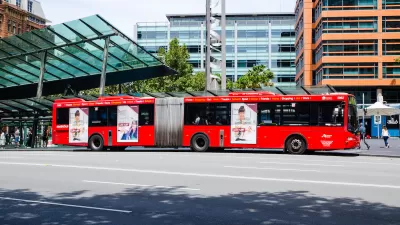Sydney's public transport system has long been criticised for its scant network, aging infrastructure and long journey times. Nicole Hasham reviews whether a new route through the city's northern beach-side suburbs will address these issues.
Almost 10,000 commuters a day board 210 buses in Sydney's northern suburbs between 7am and 9am headed for the city. With the population of this area of the city expected to see a 45,000 increase by 2036, the the state government has launched a proposal containing five options aimed at addressing the acknowledged problems of overcrowding on outdated buses. The "bus rapid transit" would operate between the city and Mona Vale and between Chatswood and Dee Why with options including a two-lane tunnel and creating permanent bus only lanes.
With the provision of alternative transport options from Chatswood, Warringah Council supported the route east-west to Dee Why. Other councils were less positive. North Sydney Council claimed a preference for the tunnel option given that it avoided removing parking options along Military Road but labelled it "inadequate" in its failure to include other modes of transport and address the anticipated increase in capacity that would accompany the expanding population. While the Neutral Bay Chamber of Commerce expressed concern at the possibility of reduced parking and that the plans did not resolve the congestion caused by buses.
A spokesman for Transport New South Wales confirmed that efforts to reduce this congestion had commenced and that the state "Long Term Transport Master Plan considered a range of measures for the corridor".
Responses to the proposals will be made available to the public by Transport New South Wales in response to requests by the article's author.
FULL STORY: Northern beaches bus plan branded inadequate

Study: Maui’s Plan to Convert Vacation Rentals to Long-Term Housing Could Cause Nearly $1 Billion Economic Loss
The plan would reduce visitor accommodation by 25,% resulting in 1,900 jobs lost.

Alabama: Trump Terminates Settlements for Black Communities Harmed By Raw Sewage
Trump deemed the landmark civil rights agreement “illegal DEI and environmental justice policy.”

Why Should We Subsidize Public Transportation?
Many public transit agencies face financial stress due to rising costs, declining fare revenue, and declining subsidies. Transit advocates must provide a strong business case for increasing public transit funding.

Paris Bike Boom Leads to Steep Drop in Air Pollution
The French city’s air quality has improved dramatically in the past 20 years, coinciding with a growth in cycling.

Why Housing Costs More to Build in California Than in Texas
Hard costs like labor and materials combined with ‘soft’ costs such as permitting make building in the San Francisco Bay Area almost three times as costly as in Texas cities.

San Diego County Sees a Rise in Urban Coyotes
San Diego County experiences a rise in urban coyotes, as sightings become prevalent throughout its urban neighbourhoods and surrounding areas.
Urban Design for Planners 1: Software Tools
This six-course series explores essential urban design concepts using open source software and equips planners with the tools they need to participate fully in the urban design process.
Planning for Universal Design
Learn the tools for implementing Universal Design in planning regulations.
Smith Gee Studio
Alamo Area Metropolitan Planning Organization
City of Santa Clarita
Institute for Housing and Urban Development Studies (IHS)
City of Grandview
Harvard GSD Executive Education
Toledo-Lucas County Plan Commissions
Salt Lake City
NYU Wagner Graduate School of Public Service




























